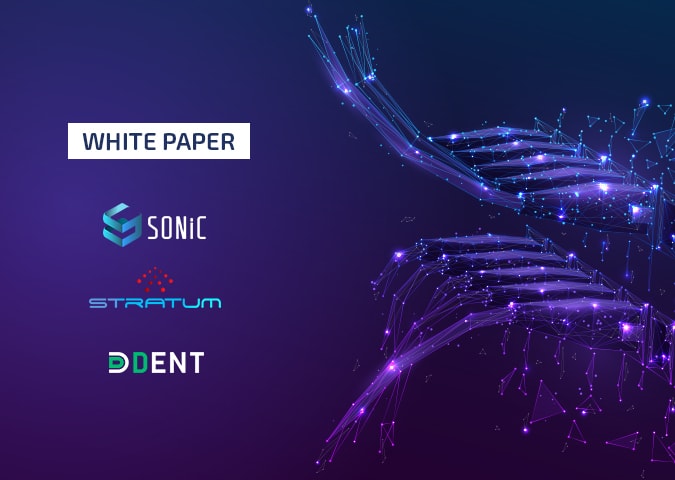White Paper Abstract
Throughout this white paper, we will analyze the three most popular open source Network Operating Systems (NOS) on the market – SONiC, Stratum and DentOS – based on the following aspects: their ecosystem, functional overview (supported features), internal design key details and use cases (scale of adoption).
Contents
Explore our new in-depth review of open network operating systems, diving deep into the conquest of the enterprise realm by SONiC and DentOS in 2023.
Learn how these NOSes differ in terms of functionalities, hardware requirements, target markets, and potential for future wide-scale adoption.
Open Networking: Its Concept and Benefits
The choice of possibilities
With a growing number of Network Operating Systems (NOS) entering the market, businesses can choose the option that best fits their needs, whether proprietary or open source. The variety of available NOSes is rapidly evolving, with competition driving the multitude of innovations. Traditional proprietary NOS options like Cumulus offer the promise of impeccable support and additional features/extensions added by the vendor, but are associated with high licensing costs.
Though many manufacturers use the terms NOS (Network Operating Systems) and SDN (Software-Defined Networking) interchangeably, NOSes run on a physical switch hardware. In contrast, SDN is an approach to control plane implementation for networking, while NOS is a piece of the SDN puzzle. PLVision, a NOS integration service vendor, provides implementation, support, and extension, as well as substantial expertise in integrating customers’ switches with SONiC and Stratum, and, now, with DentOS.
The SDN transformation
The latest wave of Open Networking technology began a decade ago, when the SDN concept was introduced with its initial implementations — forwarding plane configuration protocols like OpenFlow, as well as open NOS like Switch Light OS and OPS. This network transformation has been empowering users to capitalize on flexibility, control, and scalability like never before.
A new and effective way to build software
Organizations like ONF, OCP, TIP, and Linux Foundation, are built from industry players and united to create open source software. At the same time, the new features and functionalities must be agreed upon with the open source community they constitute. Open source has recently become a new and effective way to build software within and across diverse industries while eliminating licensing costs associated with proprietary systems. The desire is for open source projects to expand, with the issue of collaboration between producers, service providers, and users strongly emphasized.
The Choice of Open NOSes: SONiC, Stratum, and DENT OS
The most prominent open source NOSes on the market today are SONiC, Stratum, and the recently launched DentOS. Each of the systems is an evolving project that continues to add key features and functions to existing structures – this ability being one of their most desirable characteristics. In the past, attempts to create open NOS were initiated by Facebook (FBOSS), HP (OpenSwitch), ICSI – International Computer Science Institute (XORP), and Dell (OPX). However, their adequate potential for further development and industry-wide adoption has not been proven. Still, there are survivors of this open NOS evolution which we will focus on today.
SONiC – Software for Open Networking in the Cloud – exemplifies a classic approach to network operating systems. The significant difference is that, for SONiC, Docker containers were adopted to successfully address NOS component packaging issues. It was initiated by Microsoft in 2016, based on Linux distributive Debian and consisting of kernel patches, device drivers, utilities, and user space applications. SAI (Standard Abstraction Interface) serves as a common denominator for different vendors of switching hardware. SONiC has gained great interest from the industry, specifically in data center networking, and serves as the switch OS for Microsoft’s Azure Cloud.
Read “Revolutionizing Open Networks: Exploring the Power of SONiC NOS” in our blog post
Stratum was released in 2019 reflecting a lightweight SDN approach, enabled with P4/P4Runtime and a set of gRPC based protocols (gNOI, gNMI). Google donated Stratum’s initial code base with an intent to create NOS for the next generation of SDN. For network operation, it requires an SDN controller (ONOS, OpenDaylight).
As for DENT, its foundation stems from Linux kernel networking, with Switchdev technology at its core, which is already proven and actively evolving. The key idea is to offload the Linux kernel networking datapath to a switching silicon and use existing user space applications or daemons as a control plane. Amazon, the project’s driver, announced the launch of DENT in December of 2019. It aims to create a NOS that would simplify enterprise edge networking software, making it more accessible for cost-sensitive markets. DENT OS was released as open source on December 12, 2020.
Since these three NOSes – SONiC, Stratum, and DentOS – differ in terms of functionalities, hardware requirements, levels of maturity, and applications, it is beneficial to unpack each in more detail, becoming better oriented with their potential customers and users. Based on PLVision’s experience in NOS development and integration, we’ve put together a comprehensive guide to industry’s hottest open-source options.
Interested in our full white paper?
Please fill out the fields to download PDF.
- 10 Reasons NOT to Deploy
SONiC NOS in Your Network - July 12, 2024 - Choosing the Right SONiC Version for Your Network Infrastructure - May 15, 2024
- SONiC-DASH: Integration for a DPU in 4 Steps - January 23, 2023




